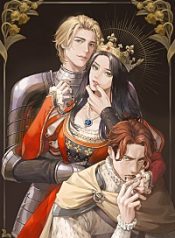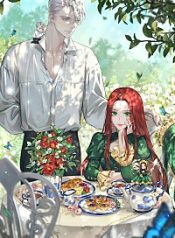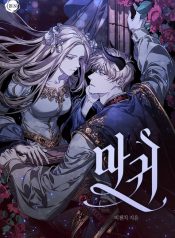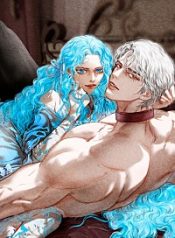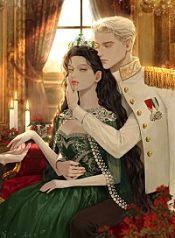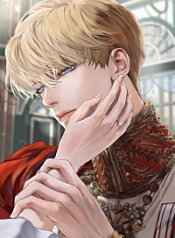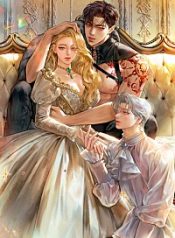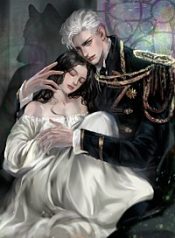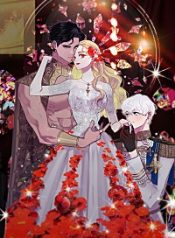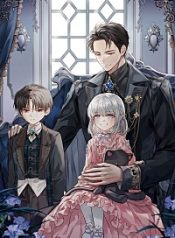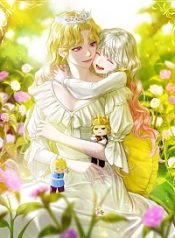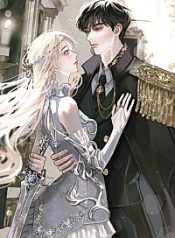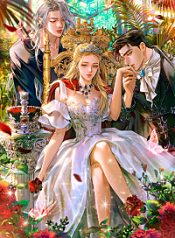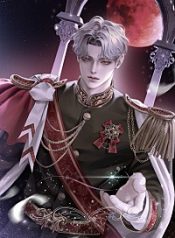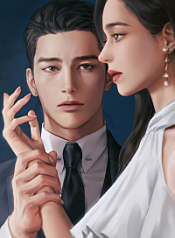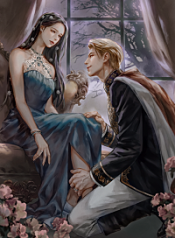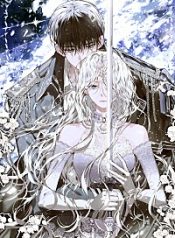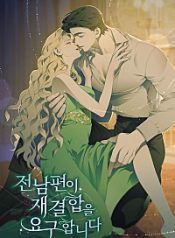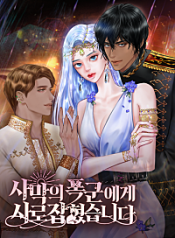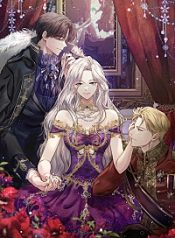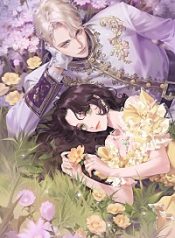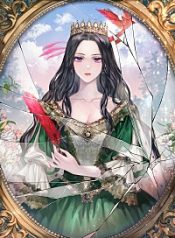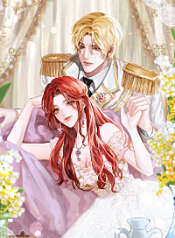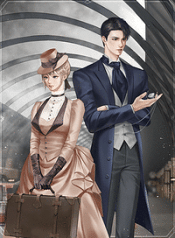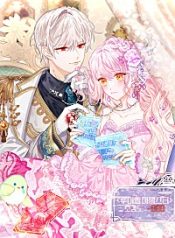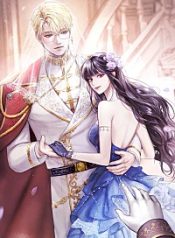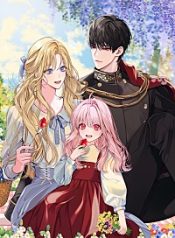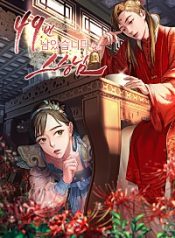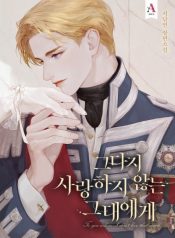There were two empires, Tane and Karsik, and thirteen large and small kingdoms on the Arkan continent.
The era of peace without war cracked and shattered as the war-hungry Emperor Kazan began a war to occupy the kingdoms.
The age of bloody battles.
True to his nickname as a brutal warmonger, Emperor Kazan conquered the kingdoms one by one. The blood on his armor and battle uniform never had a chance to dry.
He personally commanded the battles, and from the year the crown prince turned thirteen, he ordered him to don armor and observe the wars.
The Karsik Empire, which had only been involved in resolving small-scale conflicts, fought several wars with the Tane Empire at the request of the kingdoms.
The war between the kingdoms supported by the Karsik Empire and Tane turned into a prolonged battle with tremendous loss of troops.
In the end, at the suggestion of former Karsik Emperor Mathias Carl Berk, Emperor Kazan concluded a peace treaty to end the war and non-aggression within the continent.
As a peaceful exchange between the empires, Karsik Crown Prince Harchen and the young lady Leak, a high noble, were sent to study at Tane Academy.
The Tane Emperor and Empress Pamila came to Karsik for a winter hunt.
ads
In terms of area, the Karsik Empire in the north of the continent was larger, but more than half of its territory was covered with glaciers that were more white than blue and vast forests.
The mountains and forests contained hundreds of valleys and lakes formed by melting glaciers.
On the other hand, the Tane Empire, located in the central and southern parts of the continent, had conquered many kingdoms, so most of its vast territory was fertile, and the west and south were connected to the sea.
From early on, various merchant groups developed, leading to the development of trade, economy, culture, and education, and huge commercial cities were formed centered around the capital and border cities.
On the Arkan continent, several minority tribes lived like nomads, moving around.
Small and large tribes, ranging from a few dozen to several hundred people, mainly settled in deep mountains and valleys and disappeared without a trace.
They were collectively called the Heun.
The Heun people were skilled in handling mushrooms, medicinal herbs, and poisonous plants, and had transcendental eyes that could read the direction of the wind and the currents of rain and lightning.
The Amir, transcendental descendants who conveyed oracles and healed humans, were a small selection from the Heun people.
The continental people regarded the Heun people themselves as sacred, but those with supernatural powers were extremely rare. The majority of the Heun people were inherently lazy and poor, so the Heun groups were also ignored.
ads
The two empires had temples where high priests performed rites, but the power of the temples was minimal. The kingdoms and minority tribes worshipped various gods centered on totems and shamanism.
The Tane Empire had a temple on Mount Hesperos, centered around successive empresses, where priestesses performed rites and received oracles.
They found a maiden named Amir, chosen from the Heun people, as the successor to the priestesses. Amir was born with five red scars on the back of her neck. It was called the mark of the god’s claw, the Heun.
Aldisha, the Empress of Tane, regularly visited the Hesperos Temple after conception.
The priestess sat on a long-legged chair placed under the sacred Tanya tree. Her hand holding the staff made from the thick and straight branches of the Tanya tree did not tremble.
The priestess chewed on Tanya leaves, said to awaken wisdom, and waited for the voice of god.
During the four days and three nights, the priestess’s eyes gradually turned red. A metallic sound came from her throat as she sang a song dedicated to god. The sacred tree shook as if swept by a whirlwind.
Finally, the oracle was delivered.
The sun and the moon.
They should be separated by an appropriate distance, but they are stuck back to back.
ads
As they fell apart, what was originally the moon swallowed the sun, and the sun absorbed the moon’s energy. When the sun and moon become entangled, the sun will devour and tear apart the moon.
Keep a distance. Let the sun’s energy be shared with the moon.
A metallic sound like scraping metal delivered the oracle. After finishing reciting the received oracle, the priestess fainted from exhaustion and collapsed under the Tanya tree.
The priestess’s body, which had hardened stiffly, was penetrated by divine power, and she could no longer make a sound.
The maiden Amir of the Heun people, who had received the oracle, waited for the priestess to wake up.
As soon as the priestess regained consciousness, she tore open the dress of Empress Aldisha, who was sitting on a silk mat. She put her ear to Empress Aldisha’s unusually swollen belly.
Two beating sounds pounding out of sync were heard.
“It’s twins, a girl carrying the sun and a boy receiving the energy of the moon, the priestess said.”
“Twins. In this belly… Hmph.”
“The child born carrying the sun must be confined in a tower to control the overflowing power, she says.”
Interpreting the content of the oracle, discerning the will of god, and proposing an ingenious plan for the oracle was no less than receiving the oracle itself, and it was Amir’s ability.
Empress Aldisha stared into the void with pale blue eyes.
“How grotesque, how grotesque. How can two lives be conceived in the belly of a human, not even a beast? And a boy and a girl at that.”
Convinced that this was the price of the emperor’s promiscuous and perverse bedroom behavior, Aldisha gripped her round, swollen belly with trembling hands.
Aldisha shuddered as she recalled the nights with the emperor, who had embraced her in an abnormal posture and made love to her multiple times in one night.
“Lady Amir.”
Aldisha looked back and forth between the priestess and Amir, gripping her abnormally and excessively swollen belly with both hands as if to cut it.
“What if we dispose of the girl carrying the sun after she’s born?”
The priestess took off the red veil on her head. She caressed Aldisha’s plump, protruding belly. A metallic sound flowed from the priestess’s mouth. Amir conveyed the priestess’s words.
“Poor Aldisha. You will bare your milk-flowing breasts and wander the dark palace, she said.”
ads
When she was unconscious, the priestess saw a panoramic vision of the distant future.
“When the unfinished moon’s energy weakens, it will receive the sun’s assistance. Receive assistance until adulthood, but keep a distance, she says.”
“Should we hide the fact that it’s twins from Your Majesty?”
“Can you hide the sun, can you hide the moon? Cover your eyes with your pitiful hands, she says.”
“Why is this happening to me?”
Aldisha was a chaste woman.
At the age of seventeen, the princess of the coastal kingdom of Torun, bordering the Karsik Empire in the north of the Arkan continent, became the crown princess of the Tane Empire.
Kazan was five years older than Aldisha and had extensive experience with mature women. Even as the crown prince, he had a strong tyrannical disposition. As a war enthusiast, he was always boiling with desire and lacked self-control.
He was not satisfied with Aldisha’s clumsy and stiff behavior in the bedroom. In the early days of their marriage, he visited the crown princess’s bedchamber a few times out of formality, but he didn’t really feel like it.
Soon, he found gentle women who seduced him and accommodated his desires.
ads
When he grew tired of the seductive and lewd women, he ascended to the throne as emperor and discovered a unique attraction in Empress Aldisha, whom he visited out of a sense of duty. Emperor Kazan became engrossed in awakening the desires of the virtuous empress.
The empress blamed the emperor for conceiving the twins. There were no records of twins being passed down in the empire, kingdoms, minority tribes, or even other continents.
After the fifth month, Aldisha concealed her rapidly swelling belly and went into seclusion in a separate palace far from the main palace.
There were difficult times with several instances of high fever and vaginal bleeding, but with the help of imperial physicians and medicinal herbs from the Heun tribe, the mother and twins endured well until delivery.
As the oracle received by the priestess foretold, twins, a boy and a girl, the sun and the moon, were born. They were the first male-female twins born in the entire Arkan continent since the founding of the empire.
Emperor Kazan killed the midwife who assisted in Empress Aldisha’s delivery, the Heun tribe’s Amir, and eighteen maids immediately after the birth.
The Heun tribe’s Amir, who had conveyed the oracle, possessed eyes that could see the future. Barely escaping death due to Aldisha’s interference, Amir was thrown onto Mount Herperos, losing her eyes and tongue.
Amir, having lost her eyes and tongue, lay face down on the ground, suffering for ten nights and ten days on Mount Herperos.
The wounds in her eyes penetrated inward, but her severed tongue sprouted like a new shoot. The wind played the rhythm of the lute to her.
Thus, the Heun tribe’s Amir became a blind lutist, following the wind and moving like a cloud.
ads
The empress who gave birth to the twins growled like a lioness. The emperor’s remaining affection for her completely vanished.
As she conveyed the oracle and even protected the girl who would have been sentenced to death if the genders were reversed, she looked exactly like a lioness.
The twins had noticeable differences at a glance. They had the same white and smooth skin as if kneaded from flour dough, blond hair, and blue eyes, but the boy’s body was absurdly small.
To the outside world, the separate palace was known as the empress’s private retreat, with a courtyard full of red roses. The empress had Patricia stay in the west tower with the wet nurse Eva.
On a pitch-black night when Patricia caught her eye while breastfeeding Patrick in the main palace, Aldisha went to the separate palace without even adjusting her front garment.
When she tried to breastfeed Patricia, she pushed her away, feeling a heavy presence in her arms. Patricia was sturdier than Patrick and her blue eyes sparkled, even though she hadn’t been breastfed for several days.
The emperor brought in young lady Pamila Lasbur, the daughter of a humble nobleman, Viscount Lasbur, as his concubine.
Pamila Lasbur made good use of her cunning mind.
She was skilled at seducing Emperor Kazan with her natural charm and sensual gestures, igniting his lust with her skillful techniques, and obtaining what she wanted at the moment of climax.
She was beautiful enough to steal the emperor’s soul when he returned from the battlefield, and she seduced him with her smooth body.
ads
Unlike the empress who detested war and the smell of blood, the concubine personally removed the emperor’s bloodstained uniform.
The emperor built a splendid and beautiful Pyrope Palace for the concubine, just like he did for the empress.
It was a luxurious palace decorated with red garnet stones on the exterior walls, the same color as Pamila’s red hair.
There, Pamila gave birth to Prince Chris.
Chris was the spitting image of Kazan. His personality resembled Pamila’s, with a strong ambition.
When he wanted something, he obtained it by any means necessary. The emperor was at a loss with Prince Chris, who clung to his arms and acted cute.
Among the garnet stones, the most red-colored pyrope garnet was a gemstone mined in Empress Aldisha’s home kingdom of Torun.
With Pamila’s intervention, the Lasbur family became responsible for mining and transporting pyrope garnet from the Torun Kingdom.
The humble Lasbur family established the Lasbur Merchant Association. They left their small territory in the north of the empire and built a castle near the capital, relocating there.
Using her exceptional beauty and cunning mind, Pamila dabbled in lethal poisons and antidotes.
The first victim was Empress Aldisha.
The maid bribed by Pamila sprinkled small amounts of the poison she received from Pamila onto the empress’s soup, salad, and tea. She gradually increased the amount while observing the reaction.
At first, Aldisha suffered from hallucinations, followed by paralysis of her tongue and limbs. In the end, she complained of pain as if her lungs and internal organs were burning.
About three months after consuming the first poisoned soup, Aldisha died with a green-colored face.
It was the year Patrick and Patricia turned fifteen.
Male lead fell into her trap — and shattered when she walked away
This is also on my reread list!
This one is a slow burn, but when it burns, it burns hard.
Definitely worth a read, y’all!
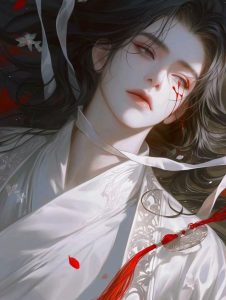
The story follows a thousand-year-old seductive spirit who, on a bet, sets out to charm the male lead—a once-promising but unfortunate cultivator.
But just when she succeeds in making him fall for her, she heartlessly leaves, driving him to madness.
Determined to find her at all costs, he captures her, keeping her by his side no matter what, even if she hates him.
I love this kind of trope—I enjoy watching the male lead suffer in agony.
The ending drags a bit with unnecessary filler, but that’s fine.
As long as I enjoy the beginning, I’m good.
Intro
As an enchantress, Su Heng possesses captivating eyes and charming beauty, easily manipulating the joys and sorrows of living beings at her fingertips.
But to enchant a god, making him taste the bitterness of love’s separation, long-lasting resentment, unattainable desires, and inability to let go…
Do you dare?
Su Heng assists a divine lord in his cultivation, aiming to make him experience all the sufferings of love, so that he can attain the Great Dao.
Only after being chased down from the heavens by the divine lord, confined and completely possessed by him, does she realize how successful she has been.
The once gentle and polite youth has transformed into someone she no longer recognizes.
[Touch the gear icon in the bottom right corner of the screen to move to the next chapter if you want.]

